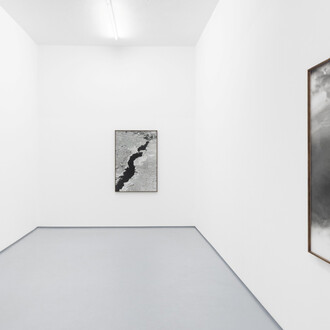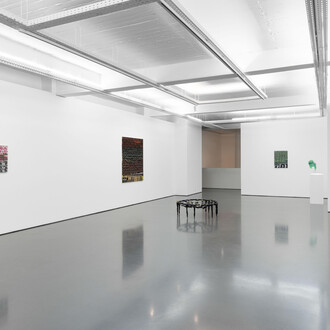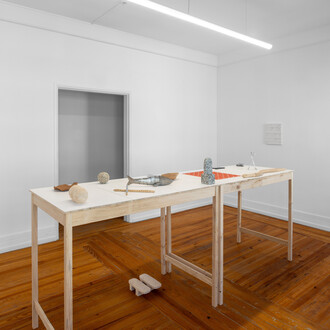The ten paintings that Pedro o Novo presents in this exhibition fall, in my view, within the spirit and practice of what we can call meta-painting, that is, a meaningful practice that questions, in today’s world, the possibilities of existence and even survival of Painting, in the context of an art world increasingly dominated by the allure of the multiple dimensions of the digital, yet not exhausted by them.
Indeed, there are more and more varied instances of “returns to Painting,” whether to traditional techniques, even when incorporating digital processes, as is the case with David Hockney, or by promoting new processes, assemblages, and formats, as we see with Anselm Kiefer. In both cases, there is a diversification of thematic approaches, ekphrastic crossovers with Poetry, or even the reinvention of genres such as landscape, portrait, and still life.
Pedro o Novo’s painting partakes in much of this, by choosing domains that are preferentially self-referential in the compositions he presents, from the acanthus motifs of classical architectural and sculptural tradition, reclaimed in their original vegetal image and represented as a “plantation,” to the multiple reorderings and revisitations of the Painter’s studio and his tools of the trade—the canvas, the brushes, the easel, the palette, but also other tools, passing through the irony with which he alludes to other moments in the History of Painting, such as that of the Portuguese Primitives—which influences the choice of his heteronym or “artistic name”—or that of Brueghelian “realism,” or even Baroque illusionists.
In fact, irony is precisely the driving force behind all this painting, by freely playing with the referential elements of artistic tradition and practice, and by creating various illusionisms with the canvases and their reverse sides, with the easel, the grids, the brushes, the palette, and other tools and instruments, in a carnivalesque reinvention of the still life and landscape genres, ultimately celebrating, beyond all the sterile trends of the moment, the enduring permanence and vitality of Painting.
(Text by Fernando António Baptista Pereira. Lisbon, June 2025)














